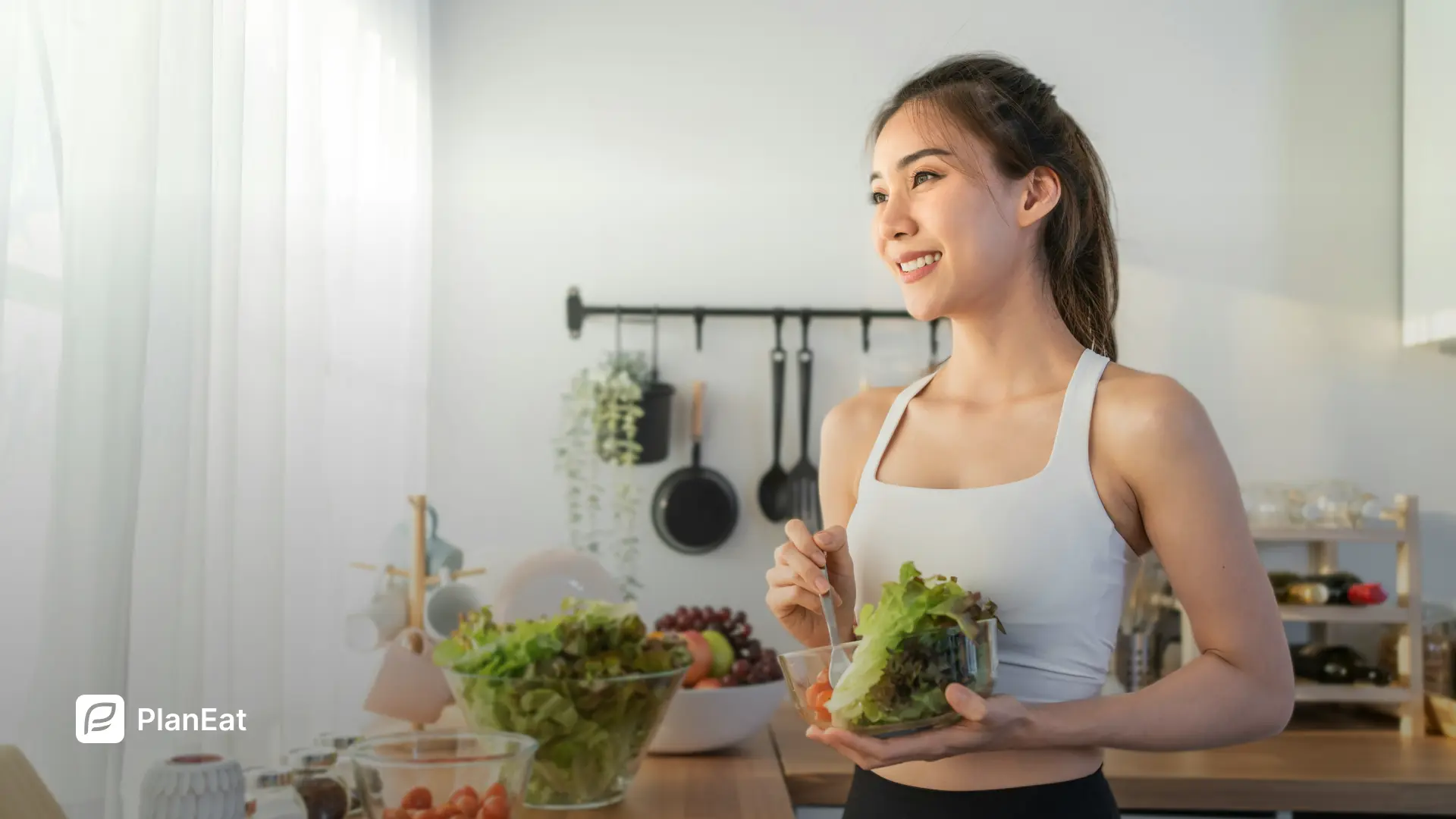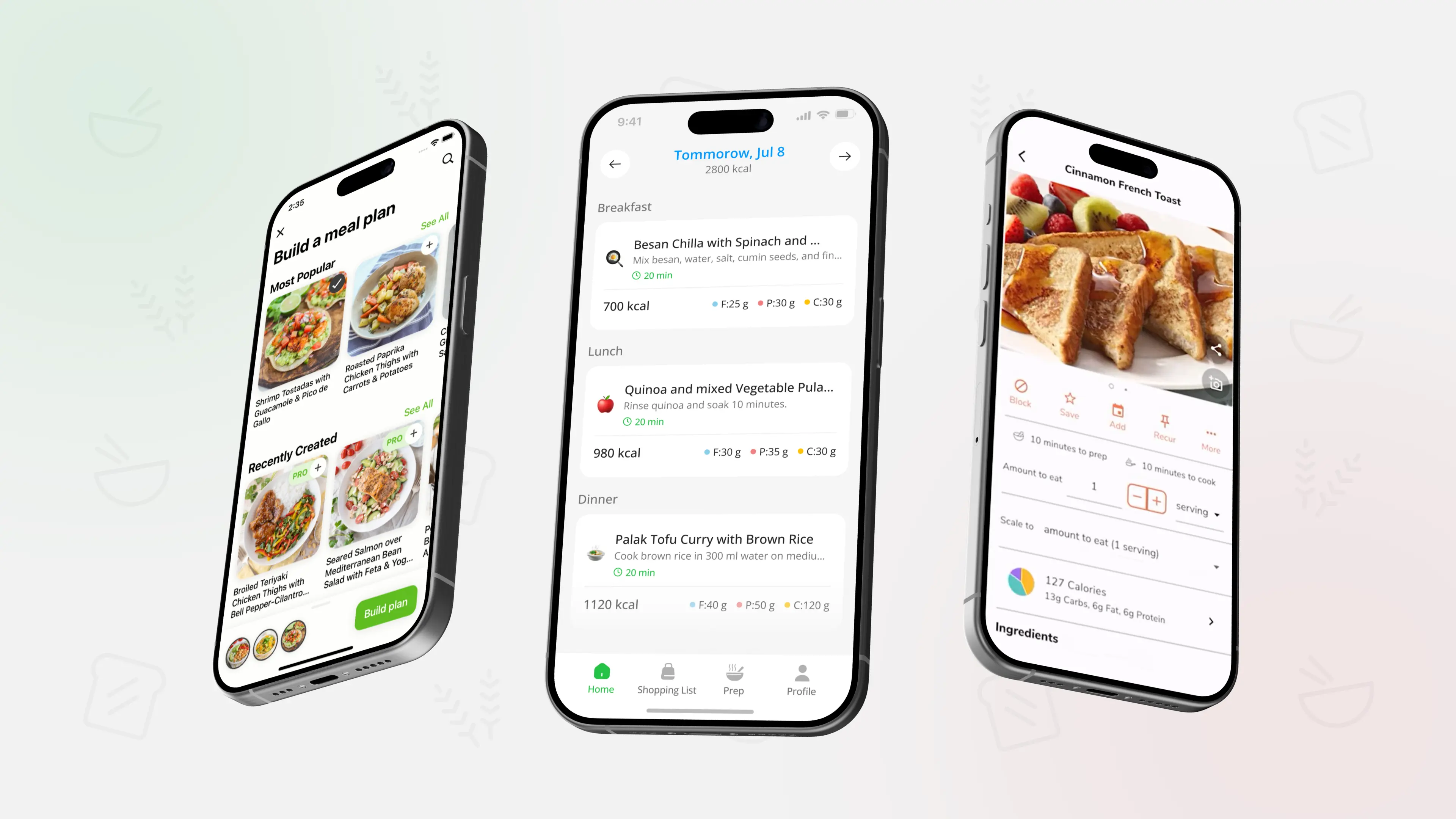7-Day Weight Loss Meal Plan (With Shopping List)
.webp)
TL;DR: A realistic weight loss meal plan does not need extreme rules or special products. This 7-day example uses simple meals with enough protein, plenty of vegetables, and moderate portions. You can repeat breakfasts and lunches, rotate dinners, and use the grouped shopping list as a template instead of counting every calorie forever.
How this 7-day weight loss plan works
This plan is built for everyday life, not a short challenge.
The main ideas behind it:
- Create a gentle calorie deficit with structured meals, not starvation.
- Keep protein present at most meals to support fullness and muscle.
- Include vegetables and some fruit every day.
- Use simple recipes that fit into a normal schedule.
You can adjust serving sizes, snacks, and ingredients to fit your body size, activity level, and any guidance from your healthcare provider.
If you are completely new to planning what you eat, it can help to first read Meal Planning Basics: How to Start (Beginner Guide) so you understand how a weekly plan fits into your routine. Then this 7-day menu becomes one practical template inside that bigger structure.
Ground rules for this weight loss meal plan
Before looking at the menu itself, here are the guiding rules.
Rule 1: Build a balanced plate most of the time
At most main meals, aim for:
- About half the plate vegetables or salad.
- About a quarter protein.
- About a quarter smart carbohydrates like whole grains or starchy vegetables.
- A small amount of healthy fat such as olive oil, avocado, or nuts.
For a deeper visual guide and more examples of how these plates can look, you can use Healthy Eating Basics: Build a Balanced Plate alongside this 7-day structure.
Rule 2: Prioritize protein and fiber
- Include a clear protein source at breakfast, lunch, and dinner.
- Use beans, lentils, vegetables, and whole grains for extra fiber.
- Combine protein with fiber rich foods to stay fuller between meals.
If you want more detail about setting a protein target that fits weight loss, you can pair this plan with Protein Goals for Weight Loss (Simple Calculator) and see how your daily range lines up with these meals.
Rule 3: Keep snacks intentional
- Plan one or two snacks per day if you are hungry, not constant grazing.
- Focus on snacks that mix protein and fiber instead of only sweets.
Rule 4: Accept repetition
- Repeat breakfasts and lunches.
- Reuse leftovers for another meal.
Repetition keeps shopping simpler and makes it easier to see patterns over time.
If you want this kind of structure without writing everything by hand, you can use PlanEat AI to generate a weekly meal plan with basic calories and macros plus a grouped grocery list. You set your goals, dislikes, and cooking time, and the app builds a similar pattern that you can then adjust toward your own weight loss targets.
7-day weight loss meal plan (example)
This plan assumes three main meals and one optional snack most days. Adjust portions based on appetite, activity level, and any professional advice you have received.
You can rotate between these options instead of following them in a strict order.
Breakfast options (repeat through the week)
- Greek yogurt with berries and a spoon of oats or granola, plus a few nuts.
- Oatmeal cooked with milk or a milk alternative, topped with sliced banana and peanut butter.
- Two eggs scrambled with spinach and tomatoes, plus a slice of whole grain toast.
Snack options (pick 1 to 2 most days, only if hungry)
- Apple or pear with a spoon of peanut butter.
- Carrot and cucumber sticks with hummus.
- Cottage cheese with a few berries.
- A small handful of nuts and a piece of fruit.
Day 1
- Breakfast: Greek yogurt with berries and oats.
- Lunch: Chicken salad bowl - mixed greens, cherry tomatoes, cucumber, grilled chicken, olive oil and lemon.
- Snack: Carrot sticks with hummus.
- Dinner: Baked salmon or white fish with roasted broccoli and a small portion of roasted potatoes.
Day 2
- Breakfast: Oatmeal with banana and peanut butter.
- Lunch: Lentil soup with carrots, celery, and tomatoes, plus a small slice of whole grain bread.
- Snack: Apple with peanut butter.
- Dinner: Turkey or tofu stir fry with mixed vegetables over brown rice.
Day 3
- Breakfast: Scrambled eggs with spinach and tomatoes, whole grain toast.
- Lunch: Tuna and white bean salad with red onion, parsley, and lemon, served over mixed greens.
- Snack: Cottage cheese with berries.
- Dinner: Chicken and vegetable sheet pan meal with carrots, onions, and Brussels sprouts.
Day 4
- Breakfast: Greek yogurt with berries and nuts.
- Lunch: Leftover sheet pan chicken and vegetables from Day 3.
- Snack: A small handful of nuts and an orange.
- Dinner: Whole grain pasta with tomato sauce, lentils or ground turkey, and a side salad.
Day 5
- Breakfast: Oatmeal with banana and a spoon of peanut butter.
- Lunch: Quinoa or brown rice bowl with black beans, corn, bell peppers, salsa, and a spoon of yogurt.
- Snack: Carrot sticks with hummus.
- Dinner: Baked cod or other white fish with green beans and a small baked potato.
Day 6
- Breakfast: Scrambled eggs with vegetables.
- Lunch: Leftover bean and grain bowl from Day 5.
- Snack: Fruit and a few nuts.
- Dinner: Turkey or bean chili with mixed vegetables, served in a bowl or over a small portion of rice.
Day 7
- Breakfast: Greek yogurt with fruit and oats.
- Lunch: Leftover chili with a side of salad.
- Snack: Cottage cheese or yogurt with fruit.
- Dinner: Simple vegetable and chickpea stew with tomatoes and spinach, served with a small piece of whole grain bread.
If you like how this structure feels and want more examples of higher protein meals for similar goals, you can also look at 7-Day High-Protein Meal Plan (With Shopping List) and mix some of those dishes into this week.
Grouped shopping list for this 7-day weight loss plan
Use this list as a starting point. Quantities depend on how many people you cook for and how large your portions are.
Produce
- Leafy greens and salad mix.
- Spinach or other cooking greens.
- Broccoli, Brussels sprouts, green beans.
- Carrots, celery, onions, garlic.
- Bell peppers and cherry tomatoes.
- Potatoes or sweet potatoes.
- Lemons or limes.
- Fruits such as bananas, apples, berries, oranges, and pears.
Dairy and eggs
- Greek yogurt or skyr.
- Cottage cheese.
- Milk or a milk alternative.
- Eggs.
Pantry
- Oats and a small amount of granola.
- Brown rice or quinoa.
- Whole grain pasta.
- Canned lentils, beans, and chickpeas.
- Canned tuna.
- Canned tomatoes and tomato sauce.
- Olive oil.
- Peanut butter or another nut butter.
- Basic spices and herbs like salt, pepper, garlic powder, paprika, and dried oregano.
Protein
- Chicken breasts or thighs.
- Turkey breast or lean ground turkey.
- Salmon, cod, or other fish fillets.
- Extra firm tofu or tempeh if you include plant based proteins.
Freezer
- Frozen mixed vegetables.
- Frozen spinach or broccoli if fresh is less convenient.
- Frozen berries if they are more affordable than fresh.
Bread and bakery
- Whole grain bread.
- Whole grain tortillas or wraps if you like bowls and wraps.
To fine tune this list for your budget and store layout, you can combine these ideas with Grocery List Structure & Money-Saving Tips and Budget 7-Day Meal Plan (Under $2/Serving) so you save money while still following a structure that supports weight loss.
Tips for adapting this plan to your life
No single 7-day plan fits everyone. Use this as a template and adjust.
Adjust portions, not just ingredients
- Larger, more active bodies usually need larger portions.
- Smaller, less active bodies often need less, even with the same foods.
If you are not sure how much to eat, you can use a simple plate based approach and then track your progress for a few weeks. For more guidance on how calorie awareness and planning can work together, you can read Calorie Counting vs Meal Planning: What Works Better?.
Plan for family or shared meals
- Keep the same base meal, for example chili or sheet pan chicken.
- Adjust side dishes or portion sizes for other people at the table.
If you cook for more than one person and want everyone to share a similar structure, it can help to combine this plan with ideas from Family Meal Planning: One Plan, Everyone Happy.
Use meal prep to make this plan easier
- Cook grains and beans in bulk.
- Prep vegetables for several days.
- Make a batch of soup or chili for quick lunches.
If you want a more detailed look at cooking ahead for the week, you can use Meal Prep Basics: Beginner’s Guide to Cooking Ahead to build a prep routine that fits this plan.
Once you know which meals from this plan you enjoy and which days feel best, you can save a similar pattern in PlanEat AI. The app keeps your preferred weekly structure, basic calories and macros, and a grouped grocery list in one place so you can repeat what works and only tweak a few meals at a time.
FAQ:
Can I lose weight just by following this 7-day plan
This plan can support weight loss because it emphasizes balanced meals, protein, and vegetables, but weight change still depends on your overall calorie intake, activity level, and individual needs. Think of it as a starting template, not a guarantee.
Do I need to follow the days in exact order
No. You can shuffle days, repeat favorites, or swap lunches and dinners. The overall pattern of balanced meals and moderate portions matters more than following a strict sequence.
What if I get hungry between meals
First, check whether your meals include enough protein and fiber. If they do and you are still hungry, add a planned snack that combines protein and fiber, such as yogurt with fruit or veggies with hummus, instead of random grazing.
Can I fit eating out into a weight loss meal plan
Yes. You can plan one or two restaurant meals in the week and keep the rest of your meals close to this structure. Choose options with protein, vegetables, and controlled portions when you eat out.
How long should I follow a 7-day plan
You can repeat a similar structure for several weeks, adjusting portions, recipes, and snacks as you learn what works for your body. Over time, the goal is to turn this kind of structure into your default pattern, not a short term project.
Educational content only - not medical advice.
A realistic 7-day meal plan for weight loss
Build your week around balanced meals with enough protein, vegetables, and smart carbohydrates, then connect them to a clear shopping list. Repeating a simple pattern like this makes it easier to eat for weight loss without starting from zero every time you plan your meals.


.webp)
.webp)
.webp)
.webp)
.webp)
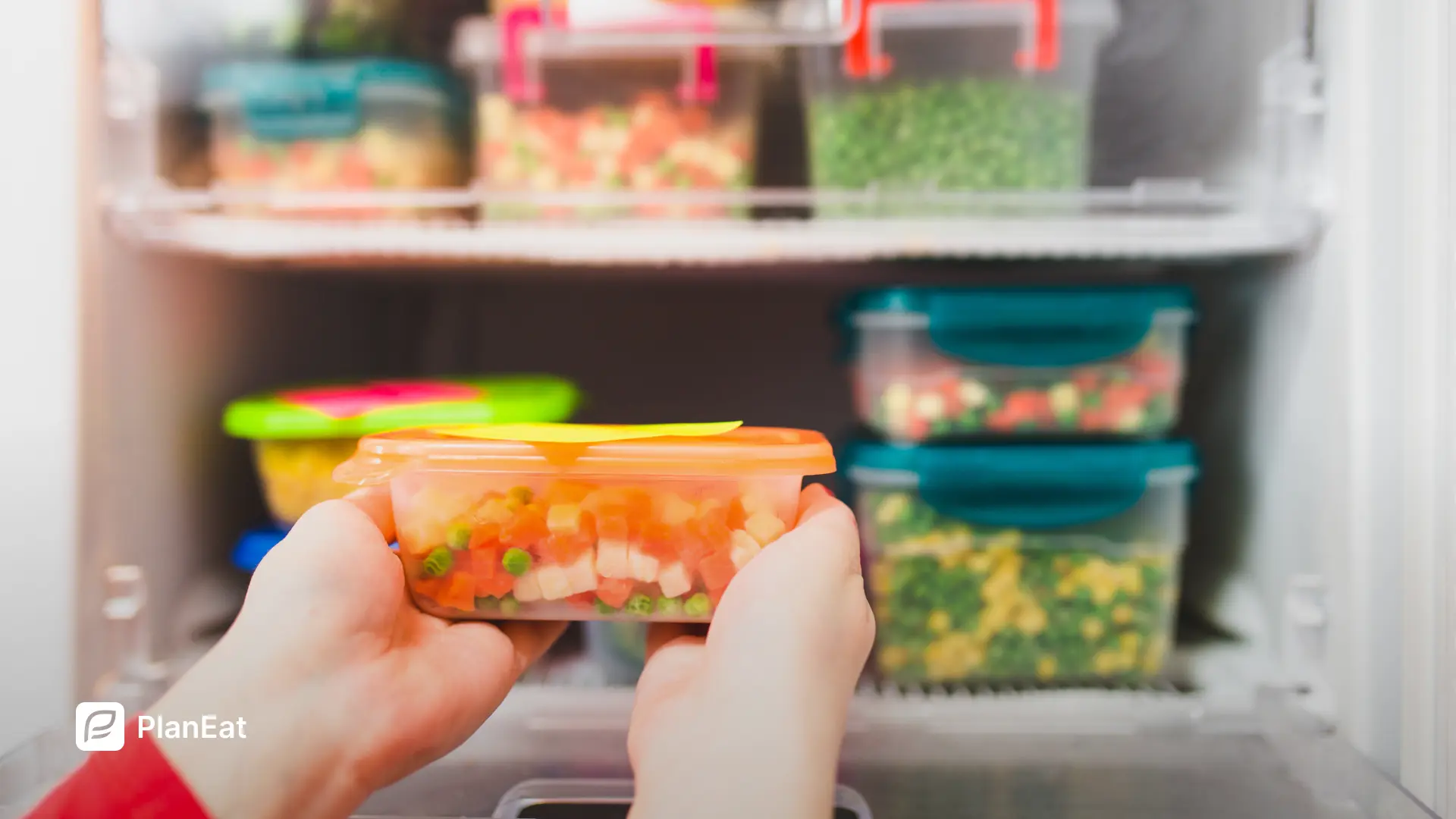
.webp)
.webp)
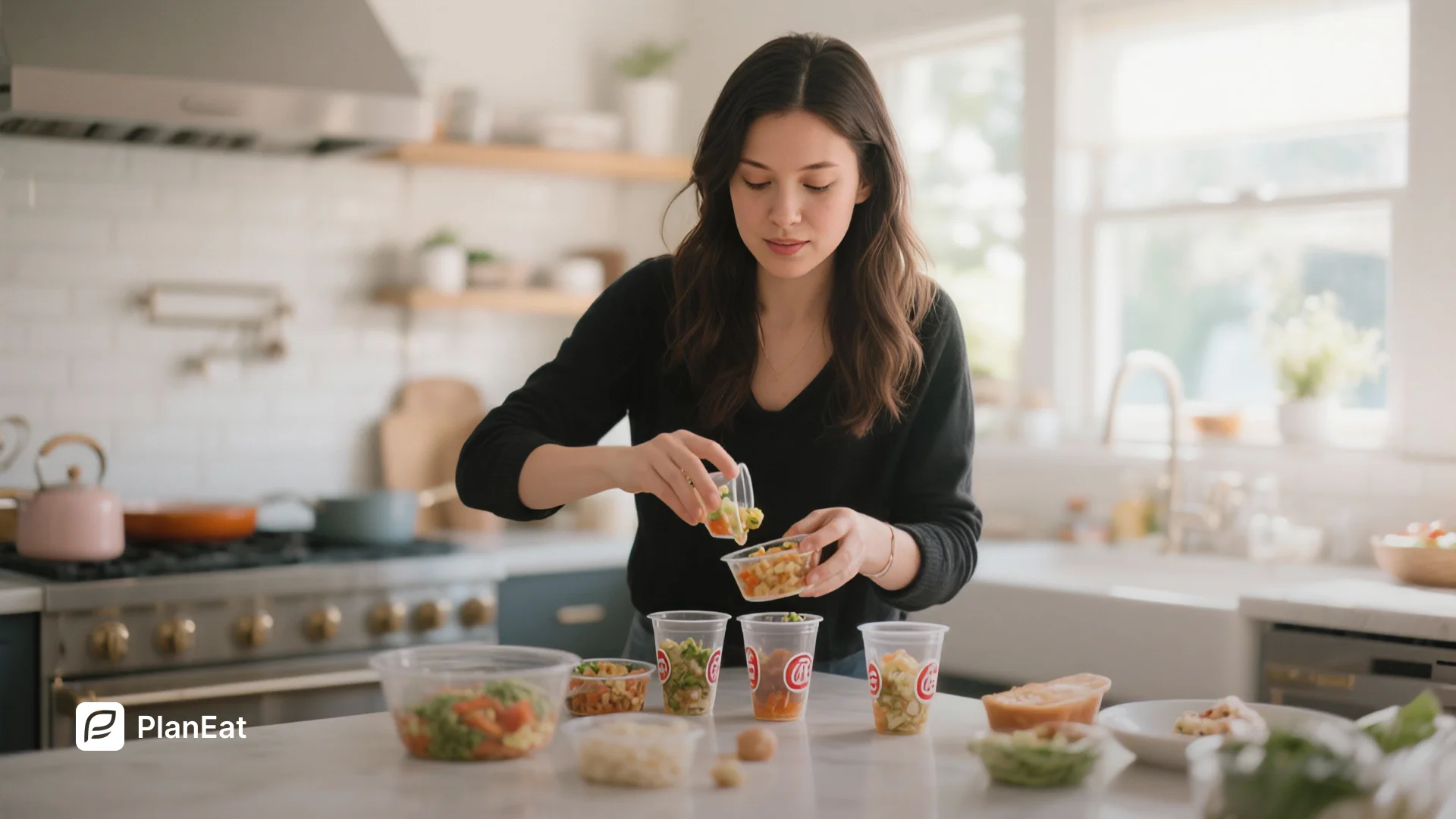
.webp)
.webp)
..webp)
.webp)
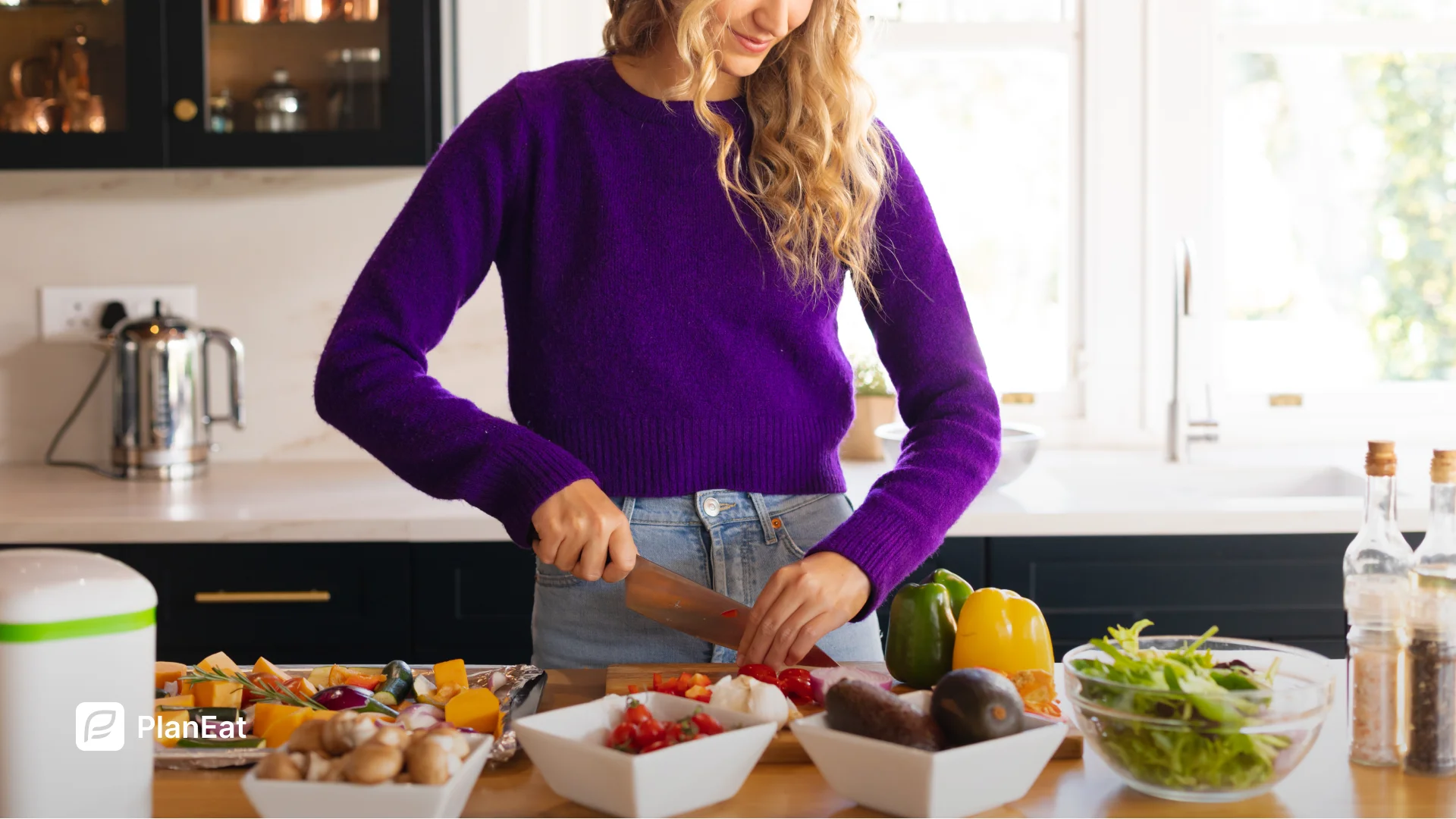
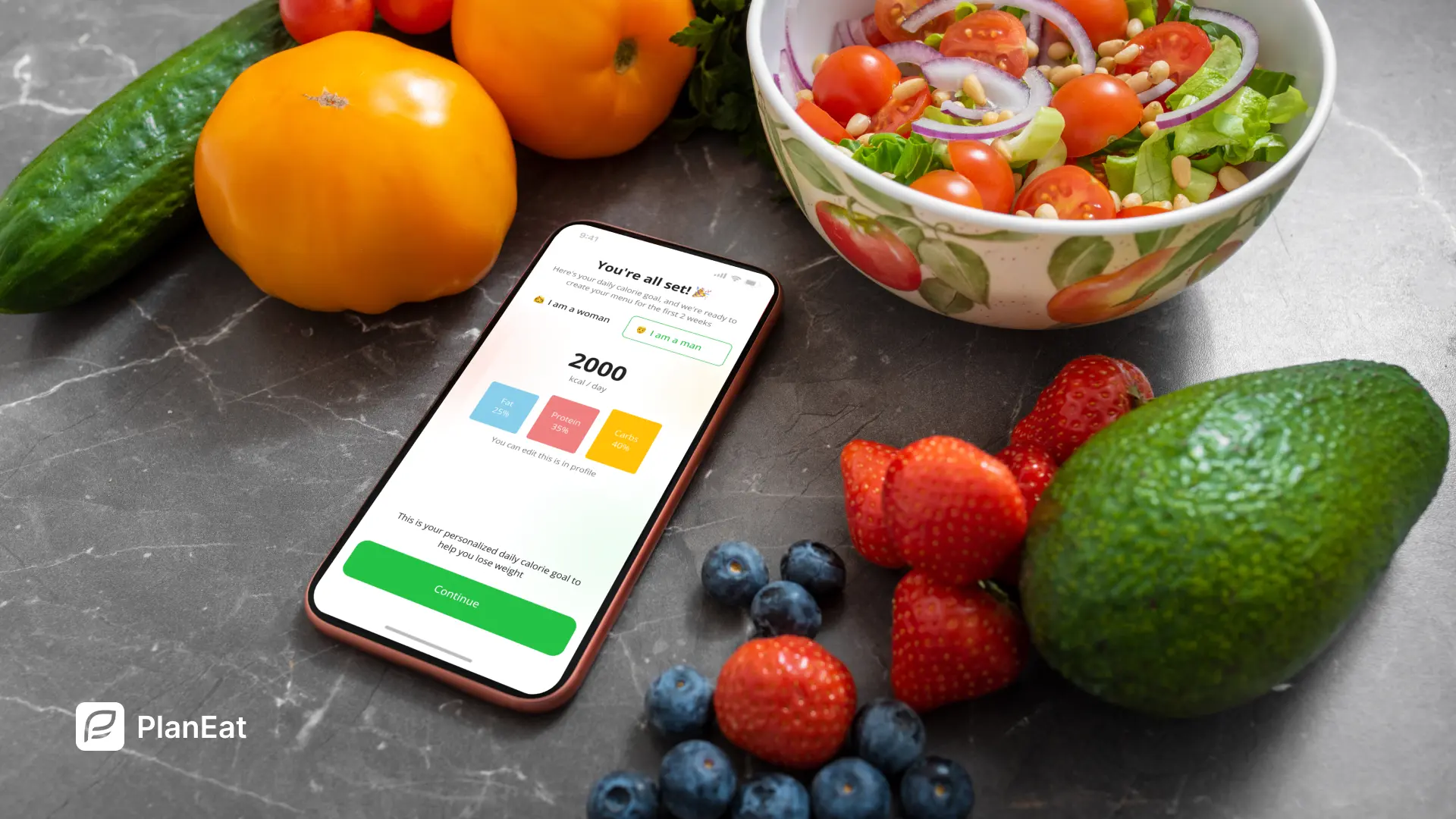
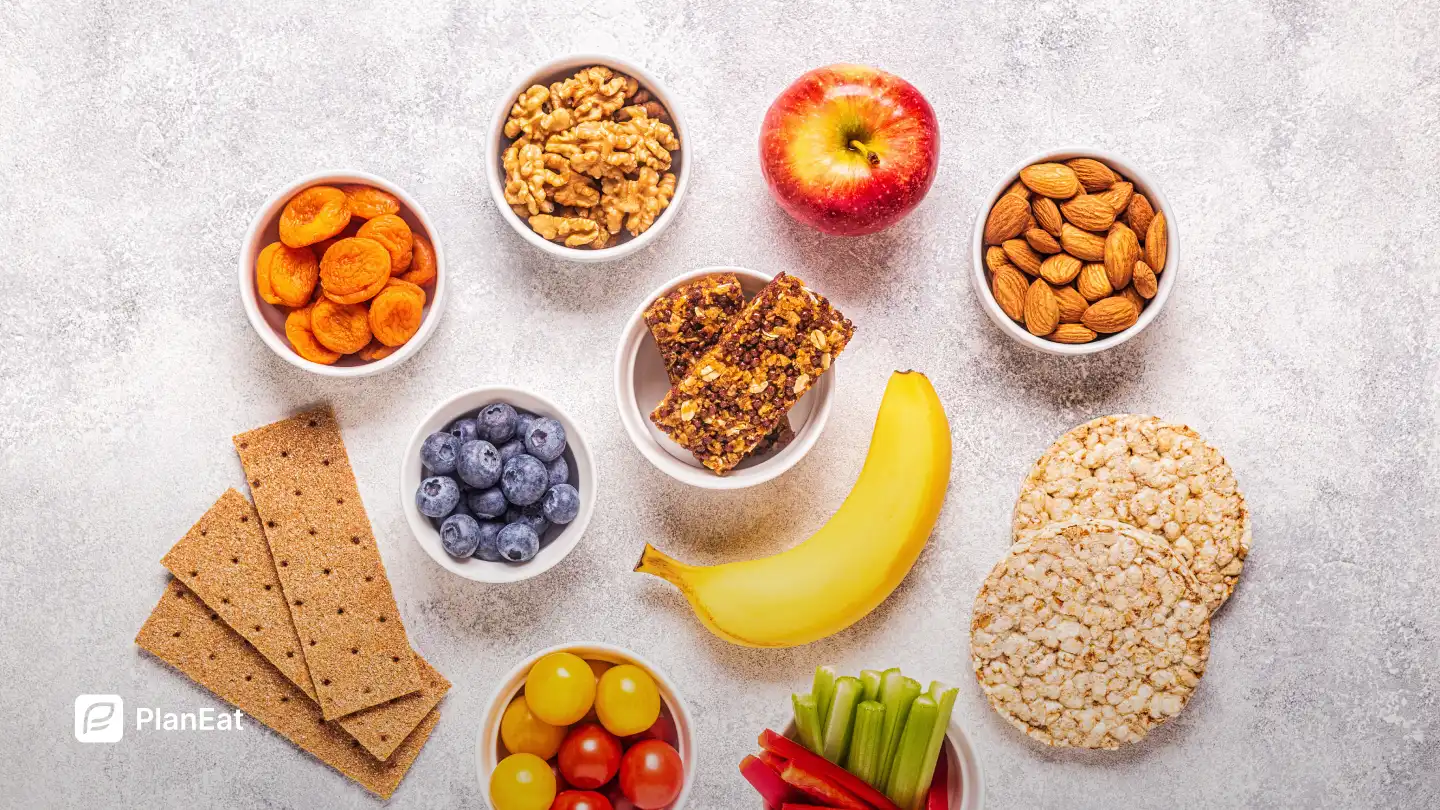
.webp)


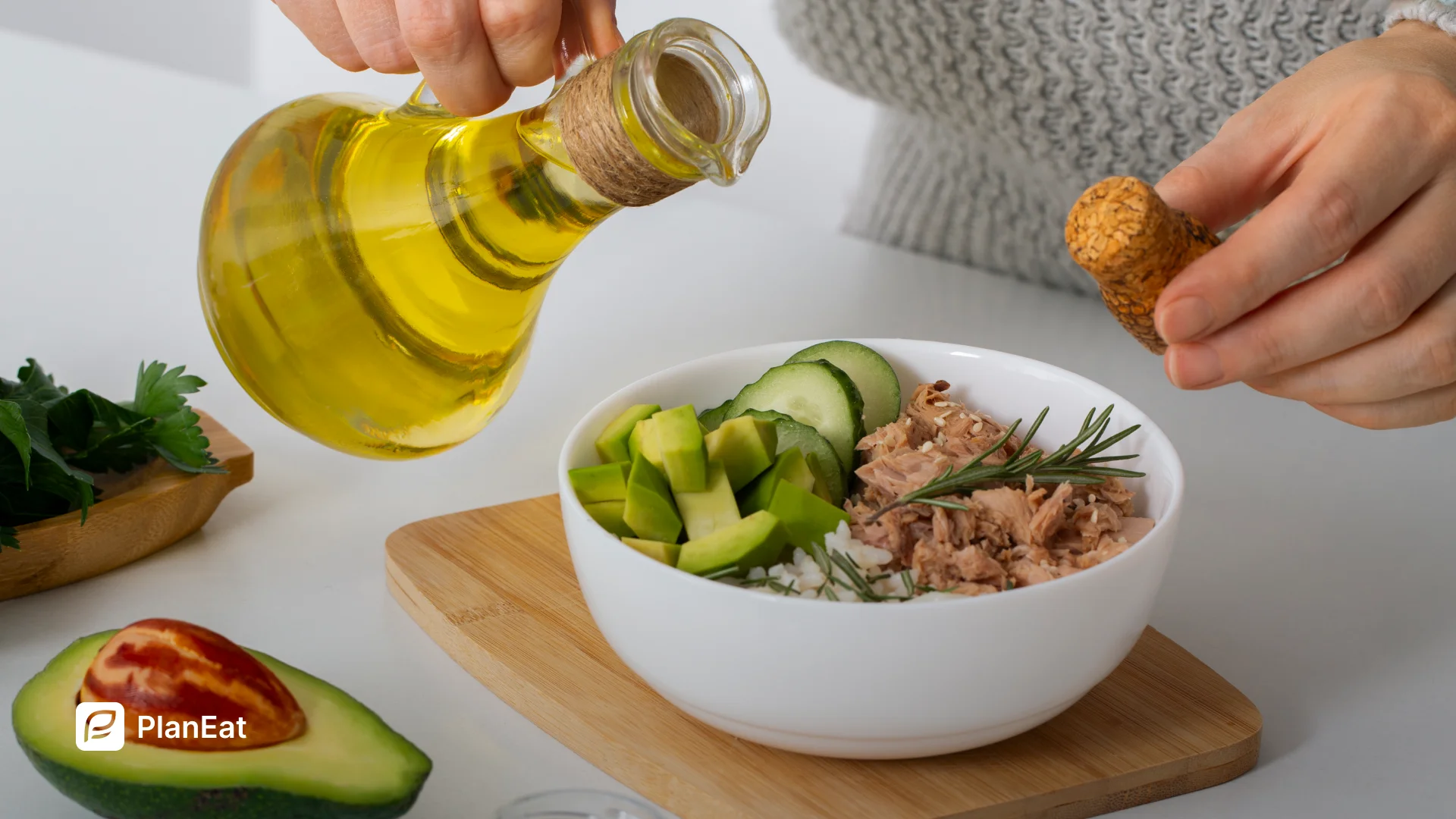
.webp)



.webp)
.webp)
.webp)
%20%2B%207%E2%80%91Day%20Menu.webp)




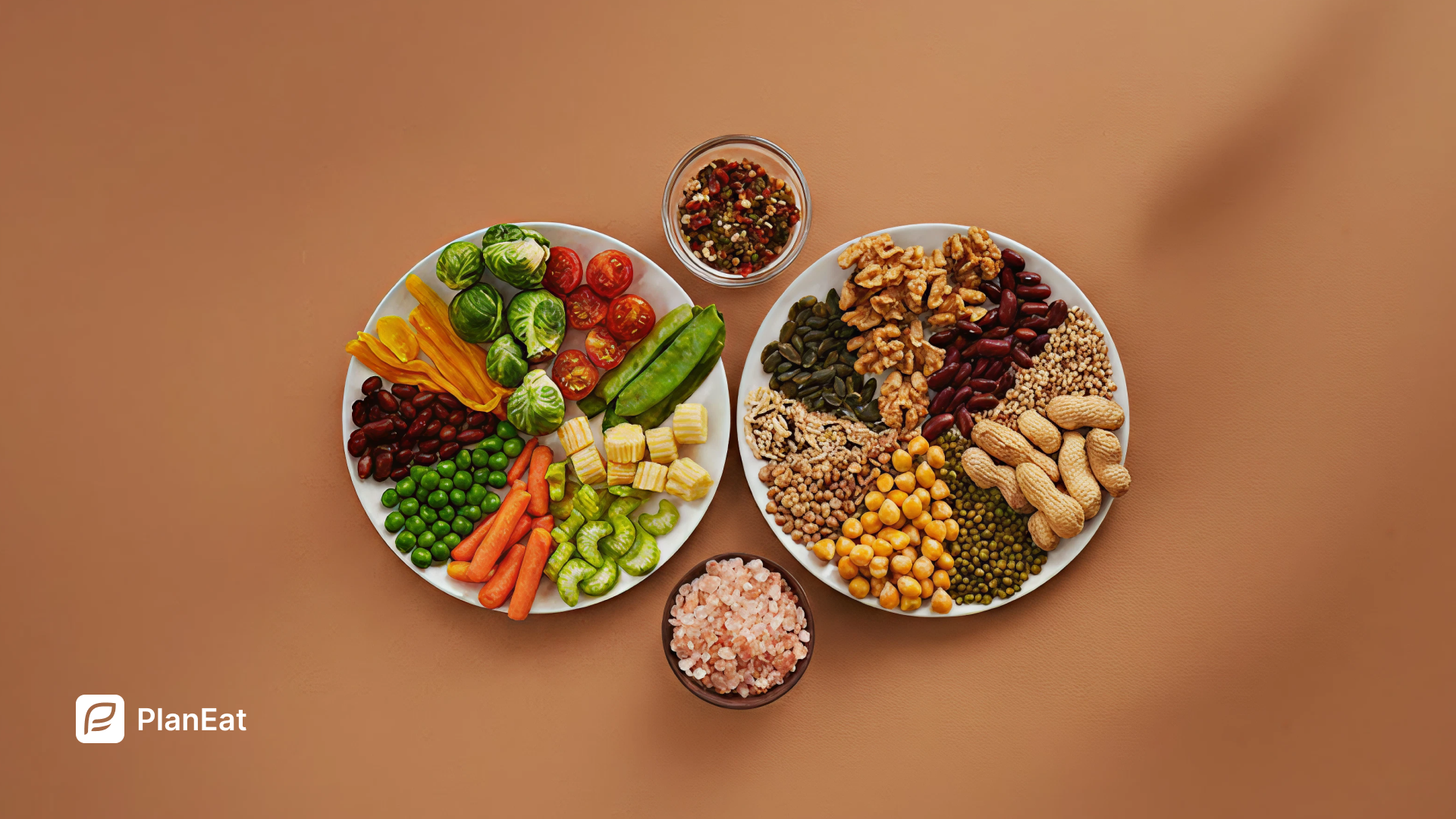
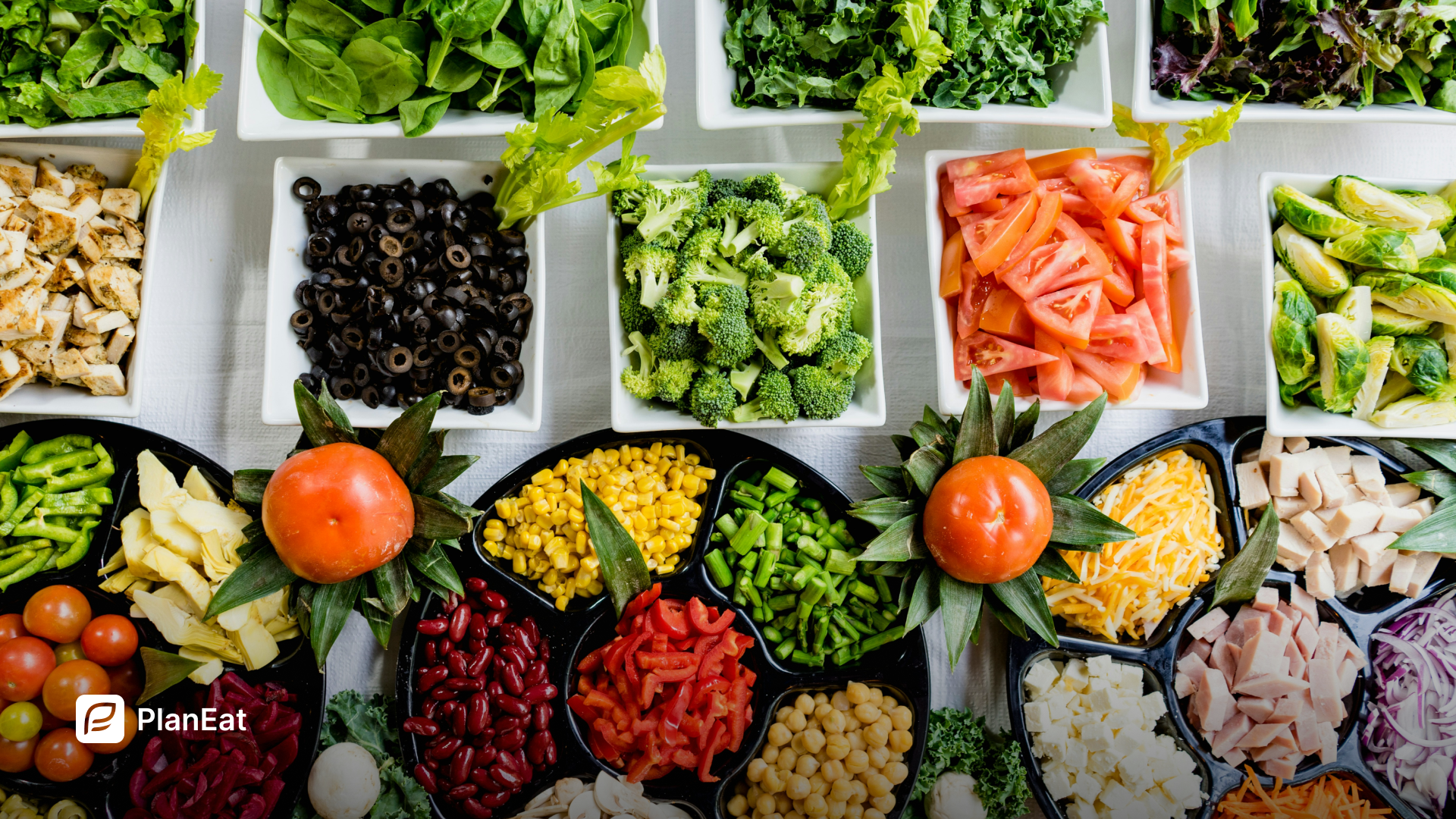
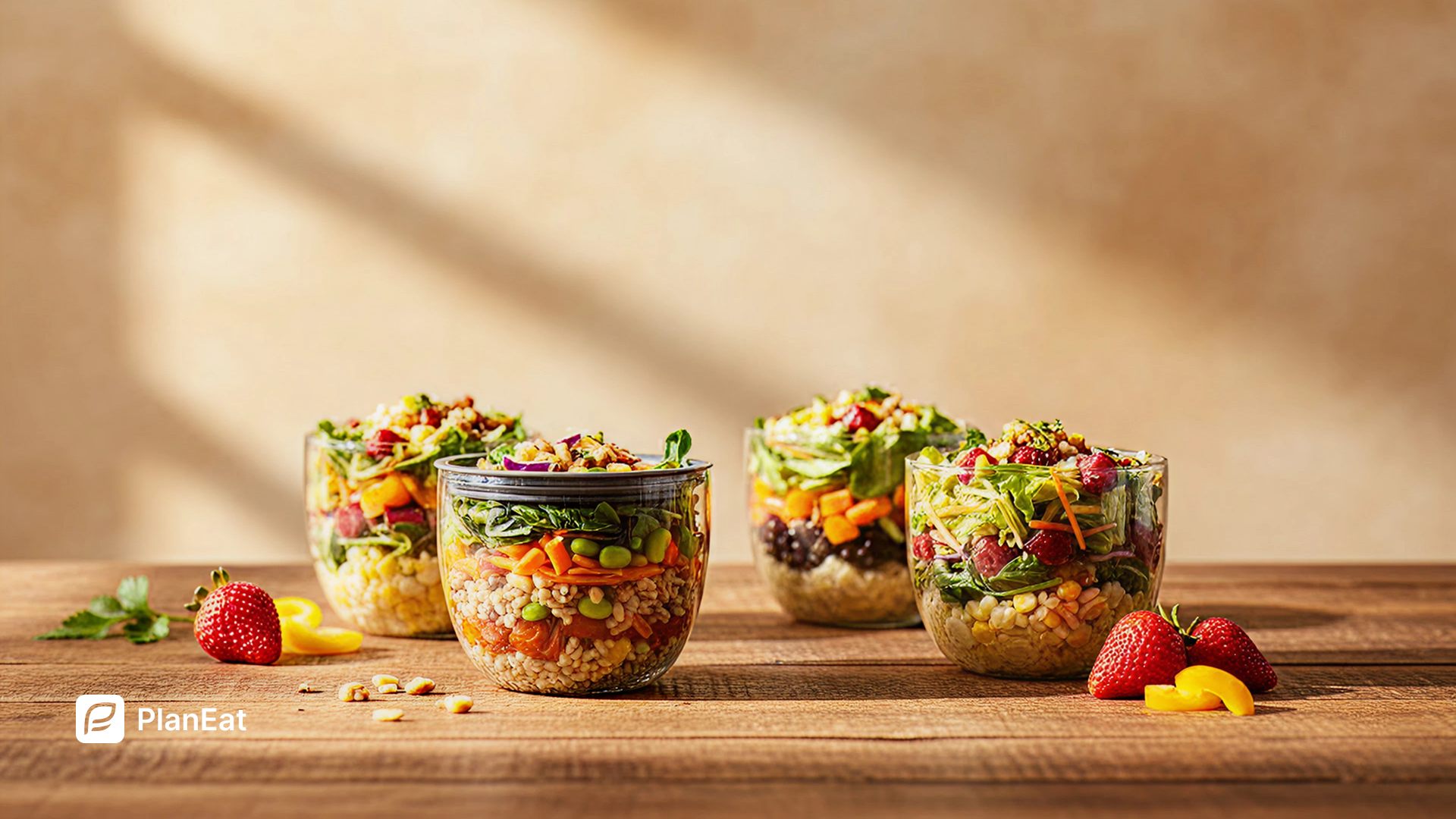

.webp)
